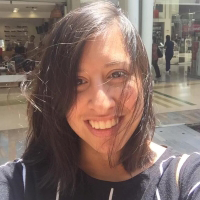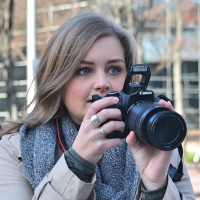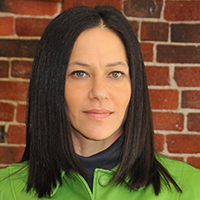
Steph Solis covers state government and immigration for MassLive. She has written about ICE courthouse arrests, efforts to deport sick foreign-born children who had deferred action and the investigation into Registry of Motor Vehicles practices.

Josh Kovner covers child protection and social justice. He was part of the Pulitzer-winning team coverage of the Lottery shootings, and of the Pulitzer-finalist team coverage of the Sandy Hook school shootings. A story on a boy with autism, “Saving Evan,” won a national award. Kovner is an adjunct faculty member at the University of New Haven.
Martha’s Vineyard Times | January 15, 2020
MV Times reporter Rich Saltzberg has been named Reporter of the Year by the New England Newspaper and Press Association.
Saltzberg has been a full-time reporter for The Times for three years, and prior to that was a freelance writer for the newspaper. His coverage of the Steamship Authority and lead contamination in U.S. Coast Guard housing were among the stories he was honored for in this year’s competition.
The Reporter of the Year award will be presented at NENPA’s annual convention in Boston on Saturday, Feb. 8. Saltzberg’s win joins dozens of nominations the newspaper received in this year’s competition.
Read more

Melissa Hanson has been reporting at MassLive for more than three years, where some of her important work has included a series on hundreds of untested rape kits in Massachusetts and an investigation into the state’s reluctancy to release 911 call recordings. Melissa also reports on breaking news, the courts, marijuana and feature stories. She is an alumna of Suffolk University and previously worked at the Lowell Sun.

Mike Blinder has been in love with media his entire life. In high school he held part time jobs as an intern at WPEN radio in Philadelphia and at Radio Shack where he sold the 1st generation of home computers.
While attending George Washington University he held a full-time job as a DC Deejay becoming a station manager within 5-years. From radio Mike moved to TV and eventually print starting one of the 1st digital newspapers in the United States where he was nominated by the Newspaper Association of America as a “Digital Pioneer.” Today Mike owns one of the world’s most respected media consulting firms with over 350 newspaper clients worldwide where he has trained over 20,000 of their staff on how to innovate to embrace new media concepts.
Mike is best known for his SMB (small medium sized business) marketing training sessions where he brings his life-long learning and love of media together in entertaining and engaging classes to cities and towns across the world. Over 100,000 business leaders have attended his sessions on how to use all forms of media more effectively to guarantee maximum results.
Mike is also the CEO (Chief Evangelist Officer) of the Curated Experiences Group the new owners of Editor & Publisher (E&P), a magazine that has served as the authoritative voice of news publishing for over 140-years. Mike is E&P’s new publisher.
Mike is the author of “Survival Selling,” has won numerous media awards, is past-president and board member for a number of media/marketing associations and has been a sought-after speaker at conferences around the world.
Mike lives in Tampa Bay Florida with his wife, daughter and golden-doodle: Ginger.
 Tara Cleary, Social Media Marketing Manager for the New England Newspaper & Press Association is passionate about digital media and design. She brings this passion and 20 years experience working in advertising at media companies to small and medium sized businesses to consult on digital and social media strategies. Tara specializes in website analytics, social media strategy, evaluation of clients overall digital footprint and ROI on digital spend. Tara has lived north of Boston most of her life and enjoys all the city has to offer. She is also an aspiring blogger, photographer and advocate for the new gig economy.
Tara Cleary, Social Media Marketing Manager for the New England Newspaper & Press Association is passionate about digital media and design. She brings this passion and 20 years experience working in advertising at media companies to small and medium sized businesses to consult on digital and social media strategies. Tara specializes in website analytics, social media strategy, evaluation of clients overall digital footprint and ROI on digital spend. Tara has lived north of Boston most of her life and enjoys all the city has to offer. She is also an aspiring blogger, photographer and advocate for the new gig economy.
 Heidi Flood is Strategic Lead, Partnerships & Outreach for Boston Globe Media. Flood researches, develops and drives opportunities for the Globe to work in partnership with nonprofits, foundations and other organizations to support public service journalism initiatives.
Heidi Flood is Strategic Lead, Partnerships & Outreach for Boston Globe Media. Flood researches, develops and drives opportunities for the Globe to work in partnership with nonprofits, foundations and other organizations to support public service journalism initiatives.
Prior to joining the Globe, Flood worked at Bain Capital, where she managed several of the firm’s philanthropic relationships within Bain Capital Community Partnership, including leading internal efforts to engage the firm’s global employee base in community service initiatives and fundraisers for a variety of non-profits. She is a graduate of McGill University and resides in Jamaica Plain, MA.

I will remember fall ’19 as a season of research. I was involved in two major newspaper studies: one related to Millennials for North Dakota Newspaper Foundation and one to determine how community newspapers benefit (or suffer) from their digital presence, as part of a project I led for the Texas Center for Community Journalism (TCCJ).
In my previous column, I shared some of the information we gathered about news consumption among Millennials. Now it’s time to share a little of what I learned while engaged in the digital project with TCCJ.
The assignment was simple, or so it seemed. Tommy Thomason wanted to make his final session after 20 years as director of TCCJ his best. He invited Andrew Chavez, New York Times, to visit with the group on Thursday evening about technical and design issues related to newspaper websites. On Friday, I was to spend the day sharing what was working and what wasn’t working in digital areas at community newspapers.
Tommy and I held several conversations in the months leading up the event. Both of us had been to too many workshops promising newspapers unrealistic revenues using new digital bells and whistles. Our self-declared assignment was to give Texas publishers a realistic idea about what was working and what wasn’t at community papers.
I was impressed by Andrew Chavez. He was very upfront that what works at New York Times might not work at community papers. He shared ideas about how papers could track visits to their sites and critiqued websites of newspapers represented at the session, offering helpful tips and ideas to improve their sites. He was also clear that print drives revenue at community papers and digital might best be used to enhance the print product. Andrew and I held private conversations during breaks, and I was glad to know we shared many of the same views about community newspapers and how they might best utilize digital tools.
I began the research for my Friday presentation weeks in advance. In all, I spent more than 80 hours preparing information to share with the group. Naively, I polled newspaper digital folks online, thinking I’d get some great ideas that I could share with the group about growing revenue on newspaper websites. Most of the responses were something like, “Let me know when you figure it out.”
When nothing else seems to work, I tend to turn to original research. I created a survey and asked press associations to share it with their members, hoping to get information that would help with my preparations. Within just a few days, almost 700 newspapers responded to the survey of 20 questions related to the digital side of their operations.
Many of the responses were what I expected. About half of newspapers felt their digital presence was beneficial, with 3 percent reporting digital provides significant revenue. Forty-one percent said their digital presence was worthwhile and brought in some revenue. Thirty-one percent of respondents wonder if it’s worth the effort to have a digital presence, while another 13 percent seem to think they’d be better off without an online presence. Another 8 percent report having no digital presence. Add them all together and the responses indicate about half of respondents feel like they benefit from their digital presence, and about half don’t.
Most newspapers have a paywall on their websites, and the most common way of charging readers is by packaging a digital subscription with a print subscription. At 20 percent of papers, most of their digital readers subscribe to the newspaper website without a print edition. Seven percent of respondents reported readers pay an upcharge to get the digital subscription along with their print subscriptions.
In Texas, we discussed various ways newspapers are generating revenue online, the amount of staff time spent on digital efforts at community newspapers, ways newspaper websites are created, and dozens of other topics.
The most interesting part of the day, according to the attendees, was live interviews with newspaper publishers and digital gurus around the U.S. who had found unique ways to grow readership and revenue through their websites.
There was a publisher in Nebraska who came up with the idea to combine resources of ten or so area newspapers into a single website, in addition to their individual sites, allowing each paper to benefit from shared revenue. We spoke with a programmer in New York who directed the redesign of a very successful daily newspaper website. We even spoke with a publisher in Kentucky who was driving significant revenue through live broadcasts of funerals. Yes, funerals.
I could go on, but I’m already over on my word-count. I’ll be speaking about my research at several newspaper conventions this spring and summer. If you’re in the area, be sure to attend and I’ll share more.
Research didn’t end in the fall. I’ll be in New York next week, working with two community newspapers just north of the city, holding focus groups and meeting with the staff and other groups to find ways to grow their papers.
What’s the bottom line of my fall research related to Millennial news consumption in the Midwest, and digital newspapers nationally? As one publisher, who responded that his paper was generating revenue from the digital side, wrote in the comment area of the survey, “Don’t give up on print. It’s still where the profits are.”